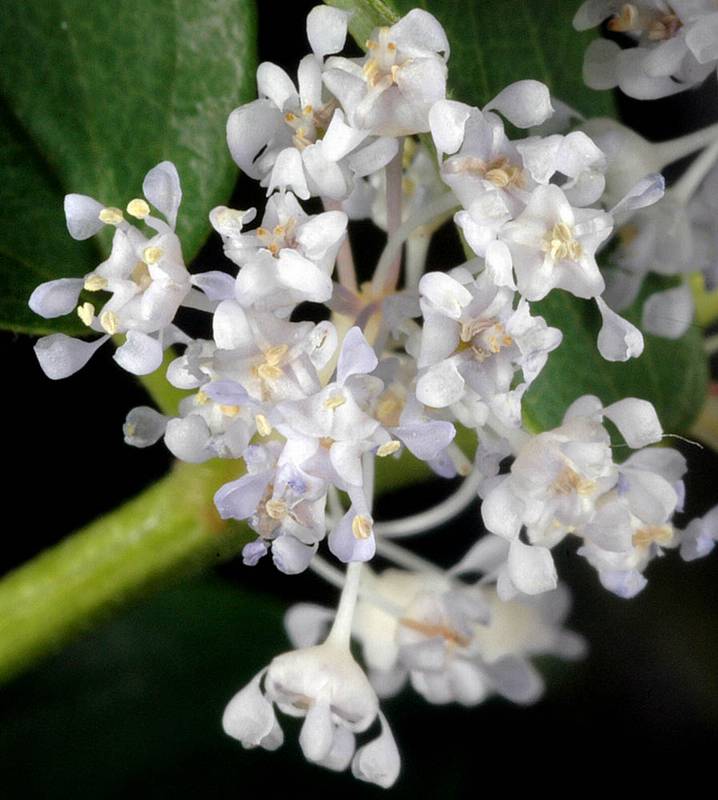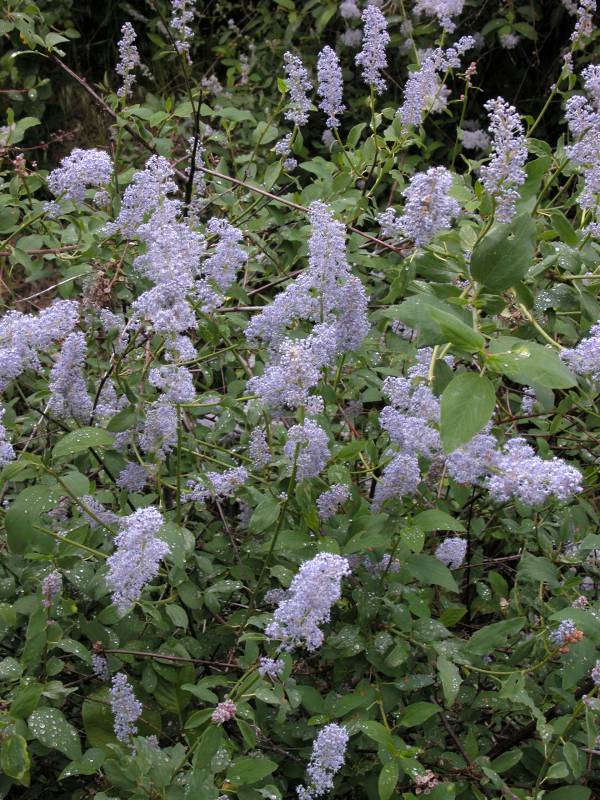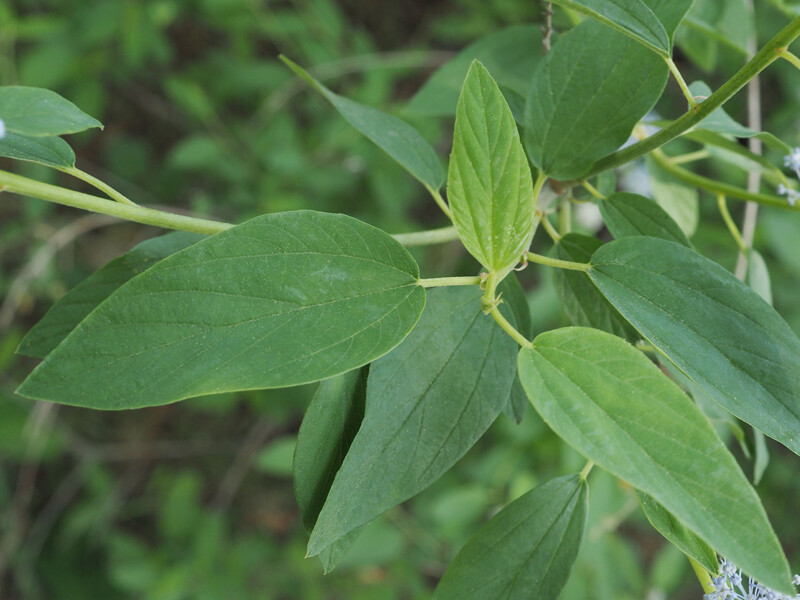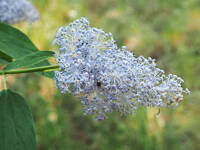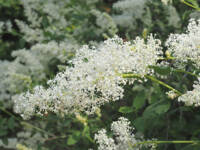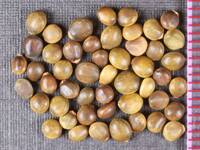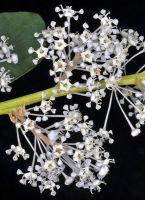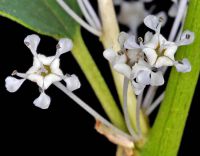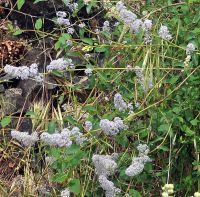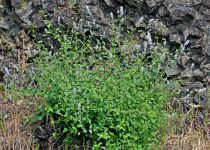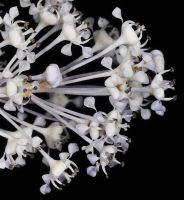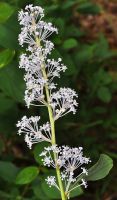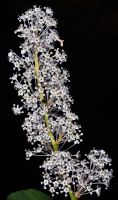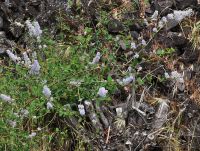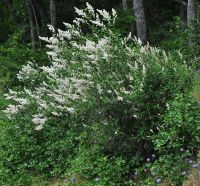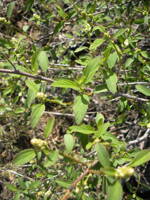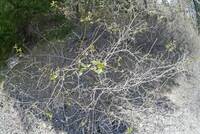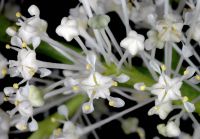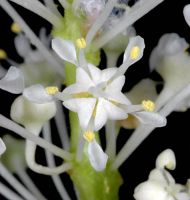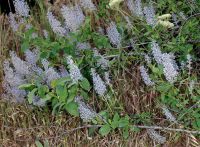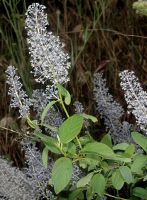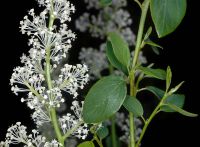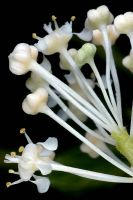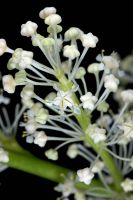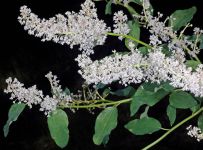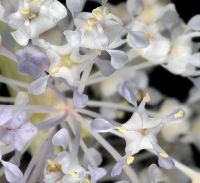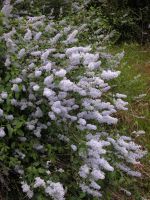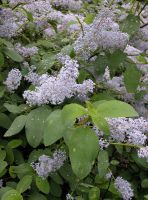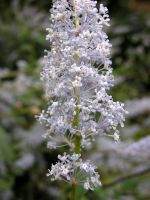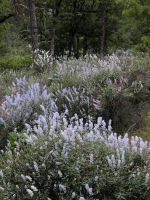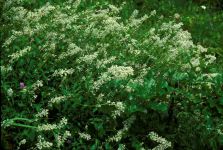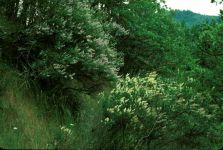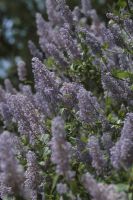Distribution: Occurring east of the Cascades crest in south-central Washington; south-central Washington to California.
Habitat: Dry, open forests and open areas at low to moderate elevations.
Flowers: May-July
Origin: Native
Growth Duration: Perennial
Conservation Status: Not of concern
Pollination: Bumblebees, bees, flies, beetles
Deciduous, glabrous to pubescent shrubs, the stems 1-4 m. tall, erect or spreading.
Leaves alternate, petiolate, the leaf blades thin, entire, 1.5-6 cm. long, oblong to ovate, usually puberulent on the lower surface, with 3 prominent veins from the base; stipules brownish, linear-lanceolate, 3-7 mm. long.
Inflorescence of large panicles terminal on young branches; calyx 5-lobed; petals 5, long-clawed, hooded, white to blue; stamens 5, opposite the petals, separated from the pistil by a flat, lobed disk, which also embeds the ovary; style 1, stigmas 3.
Capsules 5-7 mm. long, separating into 3 carpels at maturity, these with elliptic, low crests about mid-length.
Publication: Bot. Beechey Voy. 329. 1838.
Ceanothus californicus Kellogg
PNW Herbaria: Specimen records of Ceanothus integerrimus in the Consortium of Pacific Northwest Herbaria database
WA Flora Checklist: Ceanothus integerrimus checklist entry
OregonFlora: Ceanothus integerrimus information
E-Flora BC: Ceanothus integerrimus atlas page
CalPhotos: Ceanothus integerrimus photos

